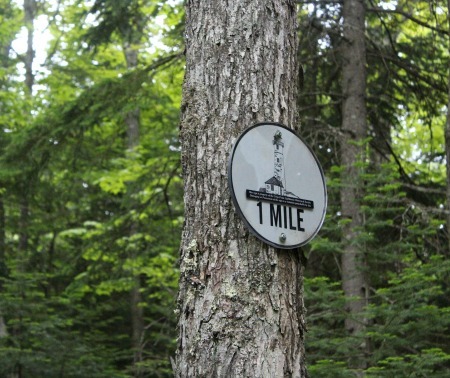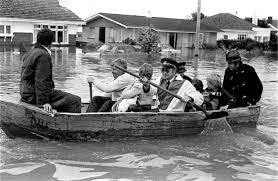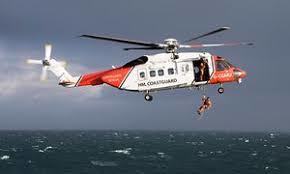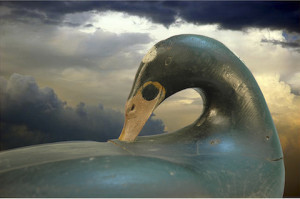Marilyn Turk's Blog, page 8
December 14, 2017
A Lighthouse Christmas Story

Hello Lighthouse Enthusiasts and Readers,
I owe you big time.
Please accept my apologies for not posting on this site as often as I used to. Believe me, I’ve wanted to, but other commitments have prevented me from doing so, and since it takes a lot of time for me to research each story, the other commitments took priority.
So I decided to do something special for you. I want to give you a Christmas gift.
Several years ago, I wrote a short story for a Guideposts book, A Cup of Christmas Cheer – Tales of Joy and Wonder for the Holidays. The book was published in 2013 and is no longer in print, so Guideposts has given me permission to share the story with you. If you like it, please go to https://www.shopguideposts.org/christmascheer34-3431.html where you can find similar books.
The story is purely fiction, but captures the isolation and challenges lighthouse keepers and their families faced, especially when they were alone on an island several miles from the mainland. I hope you enjoy the story. I’d love to hear your comments after you read it, and please share it with anyone else who might enjoy it as well. Click on the link below to read A Stranger’s Visit to the Lighthouse.
Merry Christmas,
Marilyn Turk
September 9, 2017
Higher Ground
This post was originally published on Sept. 1, 2012. I think it is a good time to republish it.
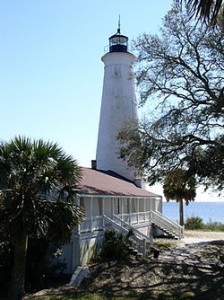
St. Mark’s Lighthouse, Florida
Capt. John Hungerford stood on the gallery of the St. Marks Lighthouse scanning the horizon. There was a storm brewing out there over the Gulf of Mexico. The sky had been overcast for two days. The air was still and quiet. He walked around the gallery, looking for signs of wildlife, but saw none in the marshy area behind the lighthouse where normally, hundreds of birds were evident. They had left the area, their natural instinct telling them to fly away to safety.
He watched the tides, each time going out farther than usual, each time coming in closer to land. The year was 1843, and as the lighthouse keeper, it was his duty to warn others about danger. But this time, there were no ships in sight. The wind picked up with gusts that increased in intensity.
He ran down the stairs to the attached keeper’s house and told his wife to get the children and prepare for a bad storm, possibly a hurricane.
“The Johnsons are here.” His wife looked out the window to see neighbors arriving.
“The water must be rising on the river. They can help us nail the shutters.”
Soon another family arrived, it too seeking higher ground as the river encroached on their farm.
As the skies darkened, the waves rose and pitched, dirty with sand they churned up from the bottom. The wind roared as the water steadily climbed. Soon the waves reached the keeper’s house, lashing out with fury and beating against the sides. The house shook from the combined attack of wind and water, the occupants screaming with each jolt.
Soon water poured in through cracks and started flooding the house.
“Up the stairs to the tower! We must get higher!” The keeper led his family out and up the steps of the lighthouse with the others following closely behind.
Water rushed in behind them as they were unable to close the door. As they tried to climb the eighty-two steps of the tower, they held onto each other for dear life. The roar of the wind drowned out the cries for help from those trapped below.
Finally, the storm abated and the water receded. Only the light keeper and his family survived, the unfortunate ones below them perished.
In Psalm 61:2-3, David said, “From the ends of the earth I call to you, I call as my heart grows faint; lead me to the rock that is higher than I. For you have been my refuge, a strong tower against the foe.” He used the analogy of climbing to a higher, solid rock, and a strong tower for protections against his enemies. He knew that God was his rock and his protection from harm.
In the same way, we face our own personal storms. We feel like we’re buffeted by winds of resistance, drowning in a sea of troubles. Yet we cannot get out of our situation without the Lord’s help. We need someone or something stronger than we are. We need to look up to higher ground where the Lord can lift us out of our turmoil.
Hurricanes still force people to seek higher ground for safety. We, too, still need to seek God in our times of trouble.
Singer/songwriter Lynn DeShazo has written a wonderful song based on this psalm called “Lead Me to the Rock.” It is on her “More Precious than Silver” cd. You can listen to it at http://www.cdbaby.com/cd/lynndeshazo2
July 24, 2017
The Lighthouse at the End of the Road
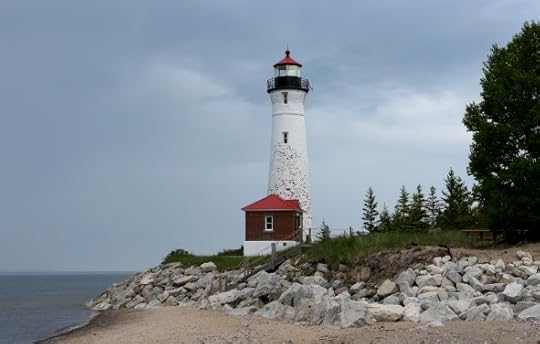
Crisp Point Lighthouse, MI, Photo by Chuck Turk
“Are you sure we’re on the right road?” I asked my husband.
He pointed to the lighthouse map on the seat and said, “There it is. See for yourself.”
But the rocky, dirt road we were on gave no hint that a lighthouse was near. All we could see on either side was trees, lots and lots of trees.
We were on a lighthouse trip, make that a mission, to see as many lighthouses on Michigan’s west coast and Upper Peninsula as possible. We’d seen quite a few already, but most were at the end of a paved road, or visible from the shore if we could see the water. But there was no water in sight.
“We didn’t turn off on another road, did we?”
“No, same road.”
“How far did it say it was to the lighthouse?”
“The website said 18 miles, but I didn’t check the mileage when we turned off the highway, so I don’t know how far we’ve gone.”
Our six-year-year old grandson in the backseat piped in. “Are we lost?”
My husband and I exchanged glances, silently saying, “We don’t know,” but aloud I said, “I don’t think so. We’re on the right road, so we’re bound to see the lighthouse soon.”
But I wasn’t so sure. We were far from any cell towers, so we had no phone GPS either. Miles dragged by, the single road requiring us to go slow as its ruts and rocks bounced us along.
Then we spotted a sign. A little round sign with a small picture of a lighthouse and an arrow pointing straight ahead was nailed to a tree on the side of the road.
“A sign! We’re on the right road!” I wanted to jump for joy.
More miles passed without a lighthouse, but then we saw another little sign, affirming our journey.
We continued on, until we saw the greatly appreciated one-mile sign.
And finally we came to the end of the road.
There before us was a small brick building with a lighthouse in the background and the water of Lake Superior spreading out beyond. We had arrived at Crisp Point Lighthouse.
Since its initial lighting in 1905, the lighthouse has stood a lonely vigil and fought off erosion by the lake to stay in its place. In fact, the abandoned lighthouse might have been lost to history, if a couple hadn’t stumbled upon it in 1988, and their interest in preservation began its restoration.
As a rule, lighthouses aren’t built on land with high-traffic areas. They’re built where they’re needed, where ships can see them and stay on course. Coincidentally, we had to stay on course to find the lighthouse at the end of the road.
Isn’t life the same way? Sometimes you aren’t sure you’re doing the right thing, following the right track, but if you are, God sends you a little sign that says you are. Just keep going, and you’ll reach the right destination.
“Seek His will in all you do, and He will show you which path to take.” Proverbs 3:6 NLT
April 25, 2017
And God Sent a Boat – Saving a Writer from Doubt
You might not realize that writers have doubts and insecurities, that no matter whether they’re published or not, they question their ability to produce something worthy of a reader’s attention.
Are you familiar with the story about the man whose home was flooded and He prayed to God to save him?
First, someone in a rowboat came by and offered to rescue him, but he refused, saying, “God will save me.”
The waters continued to rise, and a motorboat came by and offered to rescue him, but he refused and said, “God will save me.”
Then as the waters rose, he climbed up on his roof and a helicopter dropped him a ladder. But still he refused, saying “God will save me.”
So the waters rose over his head and he drowned. When he got to heaven, he asked God why He didn’t save him, and God said, “I sent you a rowboat, a motorboat and a helicopter. What more do you want?”
Yesterday, I felt like that man, drowning in doubt about the book I’m working on and my ability to write it and do it well. I desperately needed rescuing from my doubt that threatened to drown my creativity. Sometimes we need affirmation that what we’re doing is worthwhile, that we need to press forward, push through the quagmire of insecurities.
So God sent me a boat. Actually, He likes to work in threes, if you haven’t noticed, so He sent me three affirmations. First, I saw a new review on Amazon for one of my books – a wonderful 5-star review that was especially complimentary. Then I received a phone call from a group that wanted me to speak at one of their meetings. And then the mail came and in it was the sweetest note from a reader who had just finished one of my books and wanted to let me know how much she enjoyed it and encouraged me to write more books.
Thankfully, I got the message. God does not want me to drown in doubt. He wants me to persevere to “The End.”
“Jesus reached out his hand and caught him. “You of little faith,” he said, “why did you doubt?” Matthew 14:31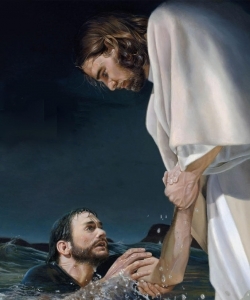
April 14, 2017
A Light in a Dark Place
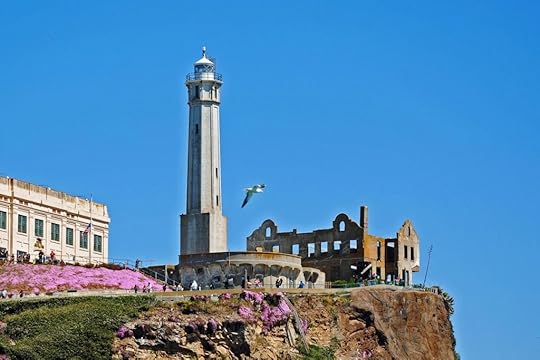
Alcatraz Lighthouse today, photo courtesy USLHS
Alcatraz – the name conjures up a dark place, a place of no hope for the prisoners who were sent there. But in the beginning, it was a place of light.
The Gold Rush in California and the subsequent increase in maritime traffic triggered the need for lighthouses on the West Coast of the United States. In response, Congress passed two acts in 1850 and 1851 that provided funds to build eight lighthouses.

First Alcatraz Lighthouse, courtesy National Archives
The first lighthouse was built in the San Francisco Bay on Alcatraz Island. The initial building, a dwelling with a lighthouse tower in the center, was first activated in 1854 and managed by a head keeper and one assistant keeper. In addition to the light, the keepers were also in charge of the fog bell which was operated by machinery.
In 1859, a military fortification called the Alcatraz Citadel was also built on the island’s summit. The citadel saw its first use as a prison in 1865 when 39 people in San Francisco were arrested for celebrating the assassination of President Lincoln, their sentence being two months.
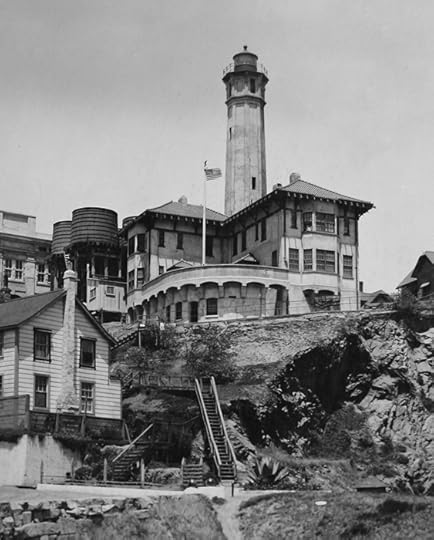
Alcatraz Lighthouse 1910, photo courtesy National Archives
A second assistant keeper was added in 1901 to help maintain the light as well as the second fog horn that was added on the other side of the island. The lighthouse keepers at Alcatraz were witness to the devastating earthquake of 1906 which caused San Francisco to crumble and catch on fire. From their vantage point, the keepers watched in horror, wondering if the end of the world was at hand. As a result of the earthquake, the lighthouse tower sustained a crack and the chimneys on the keepers’ houses fell into the roof.
The citadel was torn down in 1909, and in its place, a 600-cell prison was built. At the time, it was the largest reinforced concrete building in the world. The new structure interfered with the lighthouse’s operation, so a taller, 90-foot tower was built with new keepers’ quarters attached.
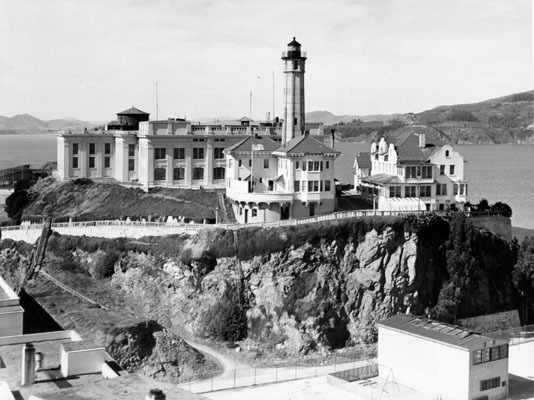 Alcatraz Prison was a military prison until 1933, when the U.S. Justice Department acquired it and turned it into a federal prison. Through the years, the prison housed many notorious criminals and was the scene of a terrible, 44-day riot that Marines were called in to squelch.
Alcatraz Prison was a military prison until 1933, when the U.S. Justice Department acquired it and turned it into a federal prison. Through the years, the prison housed many notorious criminals and was the scene of a terrible, 44-day riot that Marines were called in to squelch.
Through it all, the keepers continued to maintain the lighthouse and the two foghorns. The last civilian keeper retired in 1959, and the light was automated in 1963, the same year the prison closed. From 1969 to 1971, during the time a group of Native Americans occupied the island, fires destroyed the warden’s house and the keepers’ houses.
Today, despite the turbulent history of the island, the light still stands, still shining across the San Francisco Bay to guide mariners to safety.
During Easter, I can’t help but notice the correlation of Alcatraz Lighthouse to the resurrection. Christ was killed, buried, and thought to be finished, his body put away in a dark tomb. But on Easter morning, He arose, defeating death and the powers of darkness. Like the lighthouse, His light shone out of the darkness, and it still shines today to guide us to safety.
May God Bless you this Resurrection Day.
“For God, who said, “Let light shine out of darkness,” made his light shine in our hearts to give us the light of the knowledge of God’s glory displayed in the face of Christ.” 2 Corinthians 4:6

Alcatraz Lighthouse today
January 11, 2017
The Lighthouse Prisoner-Architect
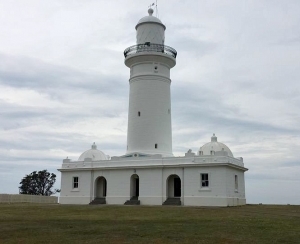
Macquarie Lighthouse, Aus, photo by Chuck Turk
In 1812, Francis Greenway sat in Newgate Prison in Bristol, England, wondering how his life had come to this.
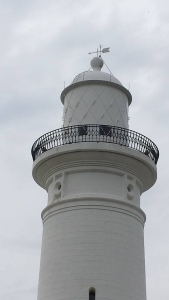
Macquarie Lighthouse Lantern Room, Aus., photo by Chuck Turk
His career as an architect had been promising, and he’d enjoyed professional recognition for his work. But at the age of 22, he became bankrupt and resorted to forgery by signing someone else’s name to a financial document. He’d pleaded guilty on the advice of his friends, but was shocked to hear when the verdict for his crime was penalty by death.
Somehow his sentence was commuted to fourteen years of “transportation,” deportation to a penal colony. While he awaited his deportation to Australia, Francis spent almost two years in Newgate Prison before traveling across the ocean and arriving in Australia in Feb. 1814. Starting life over, he resumed his trade as an architect, although still a prisoner, having become commissioned by the ship’s doctor to expand his residence. Shortly thereafter, Francis met New South Wales Governor Lachlan Macquarie, who hired him to design several government buildings in the growing colony.

Sydney Conservatorium of Music, formerly government stables, designed by Francis Greenway
In 1816, the governor employed Francis to build Australia’s first lighthouse, the Macquarie Lighthouse. The governor was so pleased with his work on the lighthouse that he emancipated the architect and hired him to be the first government architect of the colony. Francis Greenway went on to design many of the notable public buildings in New South Wales.
Francis Greenway’s story came to mind as I reflected on the past year. Despite his failures, Francis started over, using his gift to the best of his ability, even though he was a prisoner. And he was rewarded for his efforts.
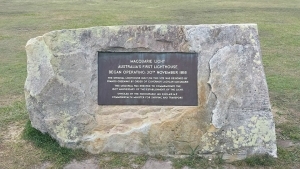
Macquarie Lighthouse, photo by Chuck Turk
So how did I do this past year? What did I accomplish? Did I do my best work? Where did I fail or fall short? If I failed, what was my reason (or excuse)?
And looking forward to a New Year, will I do better?
In the book of Matthew in the Bible, Jesus told the story of the ten talents, how three different servants were given various amounts of money called “talents” by their master. The master then went away for a while, but when he returned, he checked to see what the servants had done with their talents. He praised two of the three for putting their talents to good use, but he condemned the one who didn’t do anything with his talent.
His words to those who pleased him was, “Well done, good and faithful servant! You have been faithful with a few things; I will put you in charge of many things. Come and share your master’s happiness!” Matthew 25:23
What this story tells me is that God expects us to develop and use whatever gifts or talents we have been given and not waste them. When this year is over and when my life is over, I hope to hear God tell me, “Well, done, good and faithful servant!”
Will you use your God-given gifts this year?
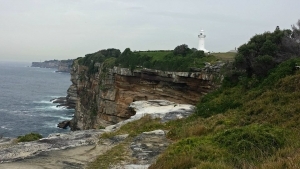
Macquarie Lighthouse, Aus., photo by Chuck Turk
December 24, 2016
Christmas at the Needles
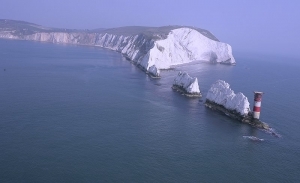
Needles Lighthouse off the Isle of Wight, UK
Over the past five years, I’ve gained somewhat of a reputation as the “lighthouse lady,” the one who blogs about lighthouses and puts them in her novels. I’m by no means an expert, but I do love lighthouses and love to research them. What I really love, though, is learning about the lighthouse keepers that took care of them 24/7, year after year. Very few lighthouses are still kept by humans since automation has taken over the lights, however, there are still a few people that used to be lighthouse keepers, and I’ve been especially privileged to get to know them.
One such lighthouse friend is Gordon Partridge, who was a lighthouse keeper in the UK for twenty-two years (1974-1996). Gordon recently shared with me what Christmas was like when he was keeper at the Needles Lighthouse off the Isle of Wight. It is so special that I wanted to share it with you.
I was privileged to serve on Needles Lighthouse,one of England’s best known and an icon of the Isle of Wight. My appointment lasted for just over six years during which time I was on duty for four Christmases, the memories of which have happily endured in my mind ever since.
 The Lighthouse was “adopted” by the nearby Royal Lymington Yacht Club who
generously, through their Clubhouse collection tub, raised much funding for “Lighthouse Comforts,”
amongst which were a stereo music centre, subscriptions to various publications, i.e. The Quarterly,
This England mag and others. Also on their list was to provide festive cheer for those on watch over
Christmas, their kindness and generosity was overwhelming.
The Lighthouse was “adopted” by the nearby Royal Lymington Yacht Club who
generously, through their Clubhouse collection tub, raised much funding for “Lighthouse Comforts,”
amongst which were a stereo music centre, subscriptions to various publications, i.e. The Quarterly,
This England mag and others. Also on their list was to provide festive cheer for those on watch over
Christmas, their kindness and generosity was overwhelming.
Usually, on the weekend before the actual Christmas, a fleet of RLYC craft, of all shapes and sizes, would sail down the Solent to the Lighthouse. Some 80 to 100 vessels would standoff and sing carols to us, weather permitting, the local Vicar would land and administer prayer to us. A senior member of the Club Committee would accompany him and deliver a sackful of cards and various cases of Christmas cheer, festive food, and often a bottle or two of the “hard stuff!”
I will never forget the atmosphere of song resonating across the water from the the assembled floating throng, who, for an hour or more, would offer a concert of favourite Christmas Carols and music which warmed our hearts with genuine Christmas love and peaceful wishes.
My heart is warmed whenever I think back, and I thank those people for their thoughtfulness and love from across the water.
We too should offer our greetings and welcome hands of friendship from across our waters.
That being so, I wish you and yours, a very Happy and Healthy Christmas. God Bless.
Gordon
May you all have a very blessed Christmas!
“Glory to God in the highest, and on earth peace, good will toward men.” Luke 2:14 (KJV)
November 16, 2016
8 Reasons Writing is Like Playing Tennis
Last weekend I watched a professional tennis tournament. As a social tennis player, I was amazed at the difference between how the professionals play and how I play I’m sure that most of the spectators shared the same thought I had, “I wish I could play like that.” But then the absurdity of that thought hit me. There are several reasons I don’t play like they do, and many of those reasons could apply to writing as well. Comparing my tennis game to the pros is like comparing my writing to that of best-selling writers. And this is why:
Professional tennis players weren’t born professional. They developed their skills over time. Writers too, don’t usually start out writing best sellers. Writing skills must be developed over time. Professional tennis players have been playing much longer than I have. Most best-selling writers have been writing much longer than I have too.
Practice, practice, practice. Professional tennis players practice every day. They know that if they want to get better, they must practice. For the same reason, writers should write every day.
Professional tennis players try to improve their game. They don’t just play, they try to get better at their sport. In the same way, writers need to try to improve their writing.
Professional tennis players listen to their coaches. If a coach tells a player what they do wrong, the player tries to correct. It. Writers have editors and critiquers who tell them what they do wrong, and how to correct their writing. Only by making the changes will a writer improve their writing.
A tennis player who wants to increase their ranking must stay focused on the game and not be distracted by things going on around them. Writers, too, need to shut out the distractions so they can focus on their writing.
Professional tennis players know their commitment means they must give up other time-consuming habits to play tennis. Writers too, must give up other things, for example, TV, that takes time away from writing.
Tennis players sometimes lose games, but they don’t give up. Writers get rejected, but maintaining a positive attitude is essential to progress.
Tennis can be lonely for these professionals who travel often, so they bond with other tennis players. Writing too, is a lonely activity, but developing relationships with other writers builds support and camaraderie.
To summarize, to be a good tennis player requires dedication to the goal. Good writing also requires staying dedicated to the goals of finishing, improving, and succeeding. If I want my writing to be as good as top writers, I must be willing to make the investment they make. If not, my writing will never get any better, and I’ll have no excuse to say, “I wish my writing was as good as …………”
“Brothers and sisters, I do not consider myself yet to have taken hold of it. But one thing I do: Forgetting what is behind and straining toward what is ahead, I press on toward the goal to win the prize for which God has called me heavenward in Christ Jesus.” Philippians 3:13-14 NIV
October 18, 2016
The Lighthouse Keeper’s Valuable Hobby
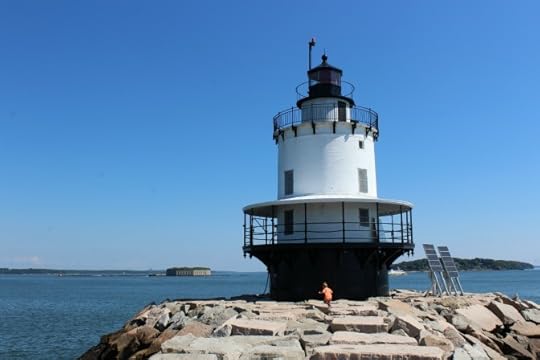
Spring Point Ledge Lighthouse, Maine, Photo by Chuck Turk
If Gus only knew…
A lighthouse keeper’s job can be a lonely one, especially if it’s on a stag station – one that doesn’t have room for families.
Such was the case at Spring Point Ledge Lighthouse at South Portland, Maine. The spark plug-type lighthouse was built on a cylindrical cast-iron caisson in the water, marking the dangerous ledge that had claimed many vessels entering the shipping channel into Portland Harbor. Responding to steamship companies who petitioned for a lighthouse, the federal government finally gave its approval in 1891.
First lit in 1897, the 54-foot lighthouse had a storeroom and cistern in the basement topped by four levels including a keeper’s office and two levels of living quarters.
Although keepers had much work to do, there were times when they could relax. Some read, some played board games with the other keeper, some fished. Some even attempted to get some exercise, like running 56 laps around the main deck to complete one mile.
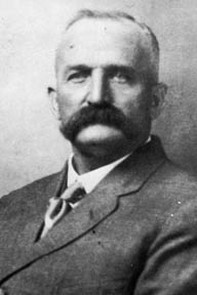
Gus Wilson, light keeper
Gus Wilson carved during his spare time. Wilson arrived at Spring Point Ledge Light in 1917, bringing his hobby with him. During his twenty years as a keeper, he whittled thousands of birds – duck decoys, shorebirds, seagulls and songbirds. He also carved a variety of animals. His decoys were especially known for their detail and their unique head and wing positions, making them distinctively different from those created by other decoy carvers.
While serving at Spring Point Ledge Light, Wilson sold many of his decoys for 75 cents apiece to the Walker & Evans sporting goods store in Portland. In addition, he gave quite a few to his friends.
Around 1940, Wilson’s decoys gained popularity and became collectors’ items. Some became museum pieces while others were sold at auction.
Gus Wilson died in 1950, so he didn’t live to see how high the value of his works appreciated. In July 2005, one of his decoys found in a Cape Cod barn was sold for $195,000. In April 2006, two Gus Wilson decoys were discovered in a fish shack and sold for $148,000 and $150,000, respectively. In 2008, another of his special decoys sold at auction for $125,000. Pieces of his work are now on display at the Boston Museum of Fine Arts.
Gus Wilson’s hobby brought him satisfaction, yet he never expected it to bring great wealth. Wouldn’t he be surprised to know the value others placed on his handiwork?
“From the fruit of their lips people are filled with good things, and the work of their hands brings them reward.” Proverbs 12:14
*In 1951, a 900-foot breakwater was constructed of 50,000 tons of granite blocks, connecting the lighthouse to the shore.
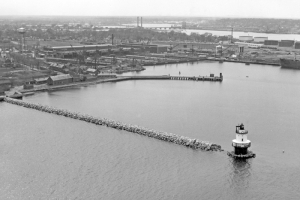
Breakwater being built to Spring Point Ledge Light, 1951
September 22, 2016
Lighting the Way by Land and Sea
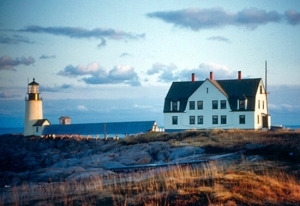
Moose Peak Lighthouse (Mistake Island) Photo courtesy T.Bruce Jeffries and lighthousefriends.com.
One day in 1905, the MacDonald brothers, both ministers, stood on top of Cadillac Mountain on Mount Desert Island, Maine. As they scanned the island-laden coastline, Alexander suddenly slapped his brother on the shoulder and exclaimed, “Angus, what a parish this would make!”
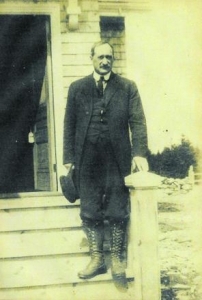
Alexander MacDonald, Seacoast Mission founder
A sturdy man unafraid of hard work, Alexander was determined to make the parish a reality. While still in college, he had taught in small coastal and island schools, becoming familiar with the struggles of remote communities isolated by lack of transportation and communication.
The brothers knew life was tough on the islands, especially for lighthouse keepers’ families that had very little education and no health care. The MacDonalds’ dream was to provide needed services to these people.
To aid them in their efforts, the brothers contacted other coastal pastors, as well as, summer residents for support. The response was “most hearty, for all recognized the great need of such work,” according to one of the early mission bulletins, and the Maine Seacoast Mission was established.
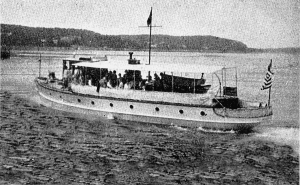
Sunbeam I
The MacDonalds purchased a sloop named Hope and began sailing to nearby islands. The following year a Bar Harbor summer resident donated his motor yacht to the ministry. Named the Morning Star, the “staunch little launch” captained by Alexander MacDonald, cruised the coast during the summer. The brothers organized Sunday Schools, held church services, and cared for the sick. They also helped secure better public schools, started a circulating library and distributed literature.
Alexander MacDonald wrote, “We have storms, fogs, adverse winds, and strong tides to contend with, but our warm reception makes us forget such difficulties. I am ever grateful to the many friends who make this mission possible. My aim is to build so that others can continue to build on the foundation now being laid, so that the people all along the coast may be uplifted socially, morally and spiritually.”
The determined minister petitioned state agencies and charitable organizations for textbooks and teachers, medical equipment, money, and volunteers. In 1912, another Bar Harbor summer resident donated $7,000 to build the first mission ship, a 57-footer. The daughter of the lightkeeper of Moose Peak Lighthouse on Mistake Island chose the name Sunbeam for the new boat, a name that signified the cheerful trust the islanders felt toward the Mission.
The new ship was better equipped with berths for emergency runs to mainland hospitals. Its durability allowed MacDonald to expand his time on the water beyond the summer season, reaching light stations and as many as 300 islands that were occupied year-round. “Mac,” as he was called, performed marriages, funerals, and Sunday services in his pastoral role. But beyond that, he brought the latest news to lonely islanders; encouraged them to plant gardens to improve their diets, often bringing them flour, vegetables, and meat. To care for their medical needs, he transported physicians, nurses, and dentists to the islands and carried the seriously ill back to mainland hospitals.
In 1916, the Mission hired a teacher for the children living in the many lighthouses along the coast, and the Sunbeam served as their classroom. I
MacDonald also began a tradition of adding Christmas gifts for island children to the Sunbeam’s cargo. When he died in 1922, brother Angus MacDonald stepped in as supervisor and the society established its first dedicated headquarters in Bar Harbor. The mission continued to meet the needs of islanders, helping to bring telephone service to the far-flung islands.
In 1926, Sunbeam II was launched, replaced by Sunbeam III in 1939, the society’s first fully year-round boat, fitted for ice-breaking and equipped with accommodations for overnight stays, emergency transport, and dental clinics.
The steel-hulled Sunbeam IV was launched in 1964 and was replaced by the current ship, Sunbeam V, in 1995.
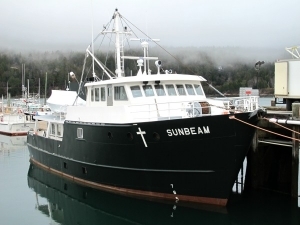
Sunbeam V, Captain Michael Johnson
Today, far less people live year-round on Maine’s islands and technology helps make living conditions better than they once were. However, the Maine Seacoast Mission continues to carry on its tradition “lighting the way by land and sea,” making life better for Maine’s coastal communities. “We respond to needs and concerns as we see them,” says Mission President Scott Planting.
“You are the light of the world. A town built on a hill cannot be hidden.” Matthew 5:14
For more information, visit www.seacoastmission.org.

